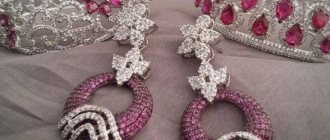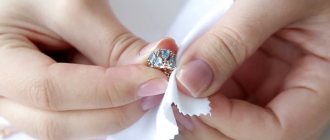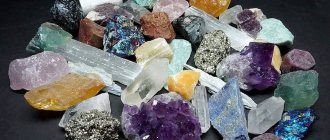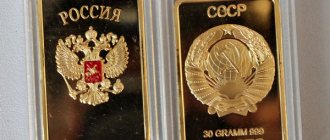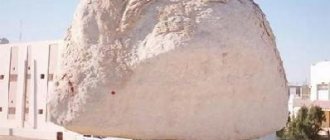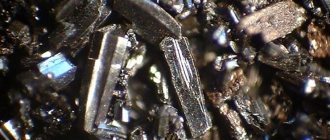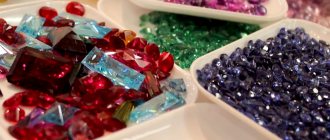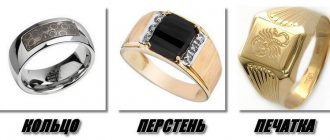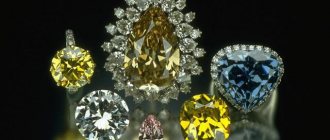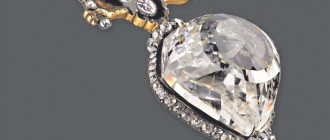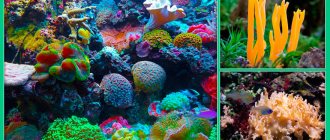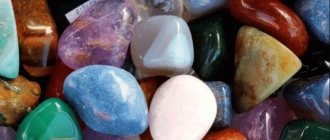The blue diamond is a very rare and unusual stone. No more than 1-2 stones of this color are found per year, and most of those on sale are synthetic, made by human hands. There are also many legends about this diamond. Let's learn more about such beautiful stones as blue diamonds.
Price
Fancy stones do not have price lists as they are very rare. All blue diamonds in the world are priced based on color purity, color intensity and the presence of additional shades. These factors can either increase or decrease the price of the stone. One of the leading values is the weight of the diamond.
Any blue diamond is a unique stone, so its price will be at least 150 thousand dollars per carat. Today it is difficult to name the highest cost, but on average it is 700 thousand dollars. To dispel all doubts, we can recall the auction in 2010, which was held in New York, where a bright blue stone (10.95 carats) was sold for exactly $15,762,500.
Characteristics of the stone
Diamonds are considered the hardest stones in the world. On the Mohs scale, this indicator is 10 points. In addition, these minerals are the most expensive and transparent. A blue diamond when cut reflects light, shines brightly and is characterized by a play of color shades.
Due to the fact that blue diamonds are rare in nature, and the demand for them is constantly increasing, they began to be grown in laboratory conditions. Artificial minerals do not differ in properties from natural ones and look just as beautiful. But they cost significantly less.
It is impossible to distinguish the analogue from the original on your own.
Empress Blue Diamond
Not long ago, a blue diamond was shown to the world in the capital of Great Britain to attract the attention of the international community. The stone, owned by the Geneva-based Steinmetz group, was the centerpiece of an exquisite ladies' piece of white gold necklace.
The name of the diamond emphasizes its rare blue hue, as well as its exclusivity. It has an absolutely symmetrical pear-shaped shape, and its exceptional quality gives it every right to bear the name “Empress”. People often call it the blue imperial diamond.
In the world ranking of blue diamonds, the Empress blue diamond ranks 17th in descending weight. An exhibition was held at London's Millennium House in 2000, where visitors were presented with eleven extremely rare blue diamonds. Among them was the Empress's diamond.
Today, the Empress Blue Diamond is the most expensive stone that once existed in European jewelry stores. According to the data, there is already a buyer who wants to buy it for 9 million US dollars, but the owner himself is ready to sell the stone for only 17 million dollars. This price could increase sharply, so it is not yet known whether the diamond will be sold at all.
Mystical meaning
Such a mysterious stone could not help but occupy a special place in the hearts of lovers of mysticism. They talk about its extraordinary properties. For example, it is believed that a blue diamond gives the owner a bright, but not very happy life.
Diamond is a gem with character; it can even harm a bad owner. At the same time, the stone gives the beloved owner self-confidence and an abundance of vitality. In a blue diamond, these properties are somewhat softened, since the stone carries the energy of water. But blue diamonds have a particularly good effect on health.
It is believed that this stone is most suitable for Aries, Libra, Capricorn, and Sagittarius.
Diamonds are magnificent crystals that captivate with their beauty. Many people like blue diamonds even more than classic transparent ones. The extraordinary radiance of the sea depths contained within it always attracts attention.
Read also about yellow diamond →
"Hope"
This diamond has a number of names, including “Blue Hope”, “Blue Diamond of the French Crown”, and “Blue Tavernier”. Behind all the big names lies an incredibly beautiful stone that brings misfortune to its owners for many centuries. It features a gorgeous blue color, a fairly large weight of 45.52 carats, an inexplicable magnetism, and a modern value of $350 million.
The stone was in the possession of many famous people in different centuries. He brought the most misfortune to Evelyn Walsh McLean. At first, the girl simply tried on the diamond on the next weekend, and then purchased it. By that time, the stone had already become a beautiful decoration in the necklace of Pierre Cartier, the famous master of jewelry, who was able to cut the diamond using the “pear” and “cushion” methods and surrounded it with 16 additional colorless diamonds. Because of the stone, the husband of a society lady ended up in a psychiatric clinic, her son had an accident, and her daughter died from sleeping pills.
Magic and astrology
Blue diamonds have strong energy. They can become a strong talisman for honest and worthy people.
Jewelry obtained dishonestly will only bring misfortune to the owner. She will materialize all his fears and bad thoughts, and also attract misfortune. Ultimately, the stone will drive the owner crazy.
Blue diamond is horoscope compatible with all signs except Scorpio.
It goes especially well with watermarks.
Other popular diamonds
The largest and most famous gems, blue diamonds, are found in museums or owned by private collectors and jewelers. These people give everyone the opportunity to look at the stones for a fee.
List of the most famous blue diamonds:
- "Hope". Weighing 45.52 carats, the stone is one of the largest diamonds. It was found in the lands of India and was engraved from a diamond of as much as 112 carats. There were many different legends around the “Hope” diamond and most people were completely sure that it brought misfortune. Back in 1958, the stone was transferred to the famous American Museum of Art called the Smithonian, located in Washington. It was from that time that it was available for public viewing along with other precious diamonds.
- Diamond Tereshchenko. The original history of the unique 42.92-carat pear-shaped diamond is unknown. Only a few facts were found out - first it was acquired by a rich family from Russia, which owned sugar factories, in 1916 it was sold to Paris, and the last time people saw the diamond was at an auction in Geneva in 1984. A Lebanese merchant named Robert Mouwad bought the stone from the auction, after which he renamed the diamond “Blue Mouwad.” According to collectors and jewelers, the value of the stone is about $20 million.
- "Wittelsbach". The diamond with a royal history features 35.56 carats. It received its name back in 1722. It was then named after the Bavarian Royal Court of Wittelsbach. Its further fate was not known until the twentieth century, when it was acquired by Joseph Kommer, a diamond expert originally from Belgium. Joseph organized the sale of the stone and it remained in private hands until the mid-60s. It was only in 2008 that the diamond was resold to one influential international jeweler, Laurence Graff. At that time, the cost of the Wittelsbach stone was exactly 24.3 million dollars.
- "Sultan of Morocco". The history of the 35.27-carat Sultan of Morocco diamond begins in the 19th century. In 1840, it was purchased by Prince Nikolai Borisovich Yusupov, who was a member of a noble Russian family. He bought it in Europe. The stone remained in the possession of the Yusupov family for 82 years. In 1922, it was purchased from Prince Felix Yusupov by the New York jewelry house. Already in 1972, the stone was sold for the last time to a private collector. It is he who still has the diamond to this day.
- "Blue Hedgehog" (or "Blue Heart"). A rather bright blue stone of 30.82 carats, according to one legend, belonged to the Empress Jerzy herself, who was the beloved woman and also the wife of Napoleon III. Many experts do not entirely believe this legend, but today it is considered one of the main ones. Experts have found out for sure that the diamond began to have such an unusual engraving in 1909 in the capital of France. There it was shaped into a heart by local jeweler Atanik Ikiyanan. Immediately after this, the stone was bought by an American jewelry house, and later it was handed over to Mrs. Ung, who lived in Argentina. This woman kept it until the mid-twentieth century, and then was sold to another jewelry house, which resold it to a European family. The deal was concluded for 300 thousand dollars. A little later, Harry Winston acquired the diamond. As a result, “Blue Heart” ended up in the Smithsonian American Museum of Art. Today, the diamond remains there as an exhibit of a precious collection that can be admired by locals and tourists.
Knowing the beauty of blue diamonds and their value, there is no doubt about their naturalness. The above stones appeal not only to experienced collectors and jewelers, but also to ordinary people who prefer to wear jewelry with them.
Exclusive products with colored diamonds. View catalog >>>
— 0.68ct Fancy Light Blue Radiant cut diamond with a GIA Internally Flawless clarity.
A gem stone for lovers of blue diamonds. Sert. GIA - 1.04 ct. Fancy Green-Blue VS2. A rare combination of green and blue colors in a lovely stone with high clarity set in bed of fine Argyle diamonds. Sert. GIA.
View all blue diamonds for sale.
Natural blue diamonds are among the rarest of the rare natural fancy diamonds, and their popularity has skyrocketed in recent years. Blue diamonds are extremely rare in nature, with only one in every 10,000 diamonds being blue. The rarity of natural blue diamonds explains why most jewelers have never seen and will never see these stones. The rarity of blue diamonds, their extraordinary beauty and, as a consequence, high price have led to the fact that these stones are considered the privilege of the elite. Blue diamonds deservedly have the reputation of elite precious stones. Naturally, we are talking about natural fancy blue diamonds, and not about an artificially obtained color.
Pendant “Heart of the Ocean”
This pendant is certainly one of the most recognizable pieces of jewelry on the entire planet. It is the most accurate imitation of a necklace that took part in the filming of the well-known foreign film called “Titanic.” In addition, this decoration was the most expensive at the Oscars.
Its creator is the jeweler Harry Winston, who made the pendant based on a blue diamond weighing as much as 15 carats. Today, the cost of the jewelry is 20 million dollars, but many manufacturers make similar pendants, passing them off as real and selling them for only a few thousand Russian rubles.
Possible shades
The shade of minerals varies. The color varies from pale, light to deep dark. Bright blue stones are especially prized. In nature they are extremely rare. There are also diamonds with the following shades:
- gray;
- black;
- purple;
- green.
Depending on the tone, gems are divided into the following categories:
- slight tint, almost unnoticeable;
- very light;
- average tone intensity;
- deep shade;
- dark colors;
- the brightest.
In addition, if the mineral contains nitrogen in addition to boron, it acquires an unusual tint of yellow color. More often, weakly colored stones and gems with admixtures of other shades are found. Intense, bright blue diamonds are much less commonly discovered.
Jewelry from Bulgari
The stunning ring, which features two diamonds, is considered unique not only because of its $15.7 million price tag, but also for a number of other reasons.
First of all, it should be noted that both stones are triangular in shape. The weight of one of them is 10.95 carats, the second - 9.87. In addition, this jewelry was made by one of the most famous and largest companies in the world. Its value is explained by the fact that a report from the American Gemological Institute confirmed: the weight, color, purity and flawlessness of both stones.
Blue diamond mines[edit]
The earliest recorded blue diamond, the Hope Diamond, was discovered in India at the Kollur mine in the Guntur district of Andhra Pradesh (which was then part of the Golconda kingdom) in the seventeenth century. [13][14][15] However, blue diamonds have also been discovered in the Cullinan mine in South Africa and in the Golconda area. [10] Several blue diamonds have been discovered at the Argyle mine in Western Australia and are offered at the annual Argyle Tender auction when they are found. [16] It is believed that blue diamonds, unlike most other diamonds, form in the lower part of the Earth's mantle, and that the boron that creates their blue color comes from serpentinite transported into the mantle by the subduction of ocean tectonic plates. [17]
Further reading[edit]
- Cooper, J. C. (ed.) (1992). Brewer's Myths and Legends
. New York: Cassell Publishers Ltd. ISBN 0-304-34084-7. - Hurlbut, Cornelius S.; Klein, Cornelis (1985). Manual of Mineralogy
(20th ed.). New York: John Wiley and Sons. ISBN 0-471-80580-7. - Rakhminov, Eden (2009). "The Book of Fancy Colored Diamonds: Facts and Secrets of the Rarity Trade" New York: Diamond Odyssey. ISBN 9659149905
- Tavernier, Jean-Baptiste (1925 [1676]). Travels in India (Second Edition), Volume II. Edited by William Crook and translated by W. Ball. London: Oxford University Press.
- Weinstein, Michael (1958). World of Gemstones
. New York: Sheriden House. OCLC 519758. - Wise, Richard W. (2003). Secrets of the Gem Trade: The Connoisseur's Guide to Gemstones
. Lenox, MA: Brunswick House Press. ISBN 9780972822398. OCLC 55662640. Emerald Online Chapters.
Links[edit]
- "Diamond" . WebMineral. Retrieved July 7, 2009.
- ^ab Rakhminov, E. (2009). The Book of Fancy Colored Diamonds: Facts and Secrets of the Rarity Trade. New York: Diamond Odyssey. ISBN 9659149905.
- "Investing in Natural Blue Diamonds". investment
.
diamonds
_ Diamond Investment and Exploration Center. Retrieved December 18 +2016. - ^ ab "Quality Factors for Fancy Color Diamonds". GIA.edu
. Gemological Institute of America. Retrieved December 18 +2016. - "Harry Winston: The Man Who Gave Away the Jewel". Smithsonian Channel
. Smithsonian Institution. Archived from the original on 2009-08-26. Retrieved December 18 +2016. - Grading Fancy-Color Diamonds, Archived November 2, 2014, at the Wayback Machine; Gemological Institute of America
- “What are the colors of fancy diamonds?” . Diamond Investment and Exploration Center. Retrieved December 18 +2016.
- "Blue Diamonds". Naturally colored. Archived from the original on December 25, 2016. Retrieved December 18 +2016.
- “What colors are fancy diamonds?” . Diamond Investment and Exploration Center. Retrieved December 18 +2016.
- ^ ab "Blue Diamonds". NCDIA. Archived from the original on November 20, 2016. Retrieved December 18 +2016.
- National Science Foundation and NBC Learn. The Science of Innovation: Synthetic Diamonds. NBC Learn. Retrieved December 18 +2016.
- "Largest HPHT Blue Synthetic Diamond". GIA. Retrieved December 25 +2016.
- India to Europe, C.E.B. Asher and C. Talbot, Cambridge University Press, 2006, ISBN 0-521-80904-5, p. 40
- History of India, Hermann Kulke and Dietmar Rothermund, Edition: 3, Routledge, 1998, p. 160; ISBN 0-415-15482-0
- Dean of Heritage, H. K. Gupta, A. Parasher and D. Balasubramanian, Indian National Academy of Sciences, 2000, p. 144, Orient Blackswan, ISBN 81-7371-285-9
- "Blues and Violet". Pink Argyle diamonds. Retrieved December 25 +2016.
- "Rare Blue Diamonds Are Born Deep in the Earth's Mantle". Science News. Retrieved December 25, 2022.
- "Upcoming Geneva Auctions Reveal Three More Very Unique Diamonds". Diamond Investment and Exploration Center. Retrieved December 25 +2016.
- "Bunny Mellon's Blue Diamond Sells for More Than $32.6 Million, Setting Two World Auction Records". Forbes
. Retrieved December 25 +2016. - "Billionaire buys 7-year-old daughter Blue Moon for record $48 million". The keeper
. Retrieved December 25 +2016. - "Oppenheimer's Blue Diamond Helps Christie's Gain Edge". Diamond Investment and Exploration Center
. Retrieved December 25 +2016. - "Botswana unveils country's largest ever blue diamond". Reuters
. 2019-04-17. Retrieved April 19, 2022. - ↑
Lewis, Sophie (17 April 2022).
"A rare 20-carat blue diamond has just been discovered, and its clarity is higher than the Hope Diamond". CBS News
. Retrieved April 19, 2022.
